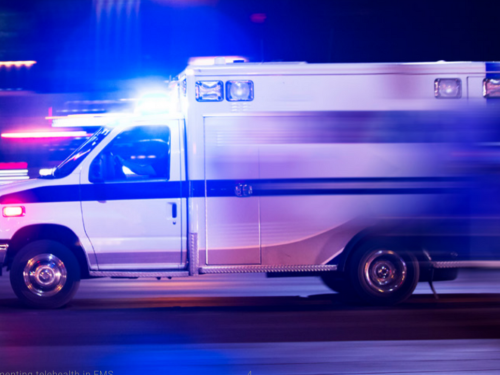According to the National Emergency Number Association (NENA), an estimated 240 million calls are made to 911 in the U.S. each year. For decades, communities have educated the public about using 911 to access emergency services, teaching kiddos as young as five years old how to call 911. But we have not really been able to clearly communicate the message of when to call 911.
If you talk to any 911 call taker, they will tell you that a large percentage of calls placed to 911 are not for true emergencies. A 2023 crime statistics report from Gitnux found that approximately 70% of 911 calls in U.S. urban areas are for non-emergency situations.
This high 911 call volume comes at a time when 911 centers are struggling with a resource shortage. A 2022 survey by National Association of State 911 Administrators (NASNA) and the International Academies of Emergency Dispatch (IAED) revealed a 25% average vacancy rate in 911 centers across America, with 105 agencies experiencing vacancy rates higher than 50%.
It is likely that we may never be able to effectively teach people when not to call 911. Some, including myself, are of the belief that we should adopt the principle that there is no such thing as an inappropriate 911 request, but there is such a thing as an inappropriate response to that request. For example, someone calling 911 to find a warming center because they are cold, should not generate an EMS response for a patient suffering a ‘Heat/Cold Exposure’. More appropriately, such a 911 call should be referred to a coordinated human service agency for assistance.
The 101 on 211
In many states, dialing 211 provides individuals and families in need with a shortcut through what can be a bewildering maze of health and human service agency phone numbers. Dialing 211 is available to approximately 309 million people, which is 94.6% of the total U.S. population, covering all 50 states, the District of Columbia and Puerto Rico. In 2022, the 211 networks answered more than 18 million phone calls; responded to more than 2.4 million texts, web chats and emails; and made more than 19 million total referrals to help.
A bit like 911, 211 calls are routed by the local telephone company to a local or regional calling center which can access databases of resources available from private and public health and human service agencies to match the callers’ needs to available resources, and link or refer them directly to an agency or organization that can help.
Services that can be accessed through 211 include:
- Basic human needs resources – including food and clothing banks, shelters, rent assistance and utility assistance.
- Physical and mental health resources – including health insurance programs, Medicaid and Medicare, maternal health resources, health insurance programs for children, medical information lines, crisis intervention services, support groups, counseling, and drug and alcohol intervention and rehabilitation.
- Work support – including financial assistance, job training, transportation assistance and education programs.
- Access to services in non-English languages – including language translation and interpretation services to help non-English-speaking people find public resources (Foreign language services vary by location.)
- Support for older Americans and persons with disabilities – including adult day care, community meals, respite care, home healthcare, transportation and homemaker services.
- Children, youth and family support – including childcare, after-school programs, educational programs for low-income families, family resource centers, summer camps and recreation programs, mentoring, tutoring and protective services.
United Way agencies, locally, nationally and internationally, have created useful online resource guides that can assist PSAPs in identifying community-based services and agencies that may be able to help 911 callers who simply need information and referral services. Even PSAPs not fully integrated with 911 can be virtually integrated with local directories of services (see inset).
But wait, what about 311?
In the 1980s, 311 got its start when city leaders began looking for ways to reduce the number of non-emergency 911 calls. In 2002, the hotline got a big boost when newly-elected Mayor Michael Bloomberg decided to apply his technological acumen to New York City’s bewildering array of city services. Backed with lots of resources and a highly publicized rollout, 311 quickly became a huge success in New York and soon spread to other major cities. Today, nearly 300 cities (and some counties) have a 311 call system or use the underlying technology, known as customer relationship management (CRM), to track service requests and a host of other capabilities. Others have 24/7 10-digit numbers to access city or county services.
Don’t forget about 988
The FCC authorized to use of 988 for suicide prevention, consolidating numerous local and national 10-digit numbers into the 3-digit quick access number nationwide. Although originally intended as a suicide prevention hotline, 988 has quickly become used to access a broad range of mental health services.
Since launch in July 2022 through May 2023 (the latest available data), 988 has received almost 5 million contacts, of which nearly 1 million are from the Veteran’s Crisis Line – a part of 988 – with the rest consisting of 2.6 million calls, over 740,000 chats, and more than 600,000 texts.
People-centered, full-service public safety answering point?
Imagine if communities took advantage of the availability of 911, 211, 311 and 988 quick access number technology into one seamless PSAP. A bank of call takers could operate on a single technology platform, in a single center, to field calls for all these numbers. Not only would there likely be staffing efficiencies to address the human resource challenges, but a common platform could reduce the potential for lost callers during call transfers and make the call intake system more people centered.
The person calling 911 because their power is out and they are cold could be seamlessly connected with the 211 system to help them ID not only a warming shelter, but also find definitive assistance for answers about why their power is out. Out because of a downed power line? Connect with the power utility to request repair (311). Out due to lack of ability to pay? Connect with a local charitable organization that can help provide temporary financial relief to get the power turned back on (211).
Similarly, a call to 988 requesting a referral for an acute behavioral health issue could be switched to a 911 type of Critical Incident Team (CIT) response if the behavioral health specialist discovers that the person has a weapon, a plan and the intent to die by suicide.
Taking this to the next level, how cool would it be if all call takers in the PSAP are trained and credentialed in all types of call taking disciplines (PD, EMS, FD, community resource referral, behavioral health, and general info). Any call taker could answer any incoming type of call and use a common technology platform, whether it’s to dispatch PD and EMS to a shooting call, or access the referral number for transportation resources to an urgent care clinic.
Does it sound Pollyanna? All it may take is a collaborative spirit, a champion for change and the realization that the current, disparate systems are redundant, inefficient, expensive and not very people centered.
We may never be able to fully eliminate the use of 911 for non-emergency calls, and maybe we should not try to discourage it. Maybe we need to adapt our processes to better manage non-emergency calls to 911 by creating people-centered processes, like integrating 211 into PSAPs, as a way to get the right resources, to the right person, at the right time.










